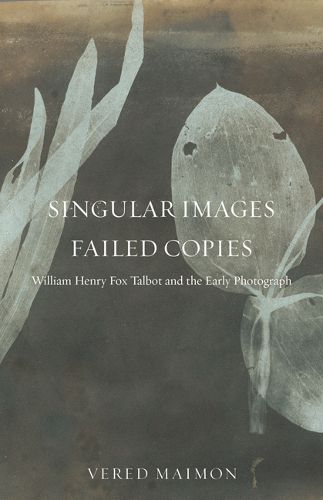Readings Newsletter
Become a Readings Member to make your shopping experience even easier.
Sign in or sign up for free!
You’re not far away from qualifying for FREE standard shipping within Australia
You’ve qualified for FREE standard shipping within Australia
The cart is loading…






Focusing on early nineteenth-century England?and on the works and texts of the inventor of paper photography, William Henry Fox Talbot? Singular Images, Failed Copies historicizes the conceptualization of photography in that era as part of a major historical change.Treating photography not merely as a medium or a system of representation but also as an epistemology, Vered Maimon challenges today’s prevalent association of the early photograph with the camera obscura. Instead, she points to material, formal, and conceptual differences between those two types of images by considering the philosophical and aesthetic premises linked with early photography. Through this analysis she argues that the emphasis in Talbot’s accounts on the removal of the artist’s hand in favor of the pencil of nature did not mark a shift from manual to mechanical and more accurate or objective systems of representation.In Singular Images, Failed Copies, Maimon shows that the perception of the photographic image in the 1830s and 1840s was in fact symptomatic of a crisis in the epistemological framework that had informed philosophical, scientific, and aesthetic thought for two centuries.
$9.00 standard shipping within Australia
FREE standard shipping within Australia for orders over $100.00
Express & International shipping calculated at checkout
Focusing on early nineteenth-century England?and on the works and texts of the inventor of paper photography, William Henry Fox Talbot? Singular Images, Failed Copies historicizes the conceptualization of photography in that era as part of a major historical change.Treating photography not merely as a medium or a system of representation but also as an epistemology, Vered Maimon challenges today’s prevalent association of the early photograph with the camera obscura. Instead, she points to material, formal, and conceptual differences between those two types of images by considering the philosophical and aesthetic premises linked with early photography. Through this analysis she argues that the emphasis in Talbot’s accounts on the removal of the artist’s hand in favor of the pencil of nature did not mark a shift from manual to mechanical and more accurate or objective systems of representation.In Singular Images, Failed Copies, Maimon shows that the perception of the photographic image in the 1830s and 1840s was in fact symptomatic of a crisis in the epistemological framework that had informed philosophical, scientific, and aesthetic thought for two centuries.